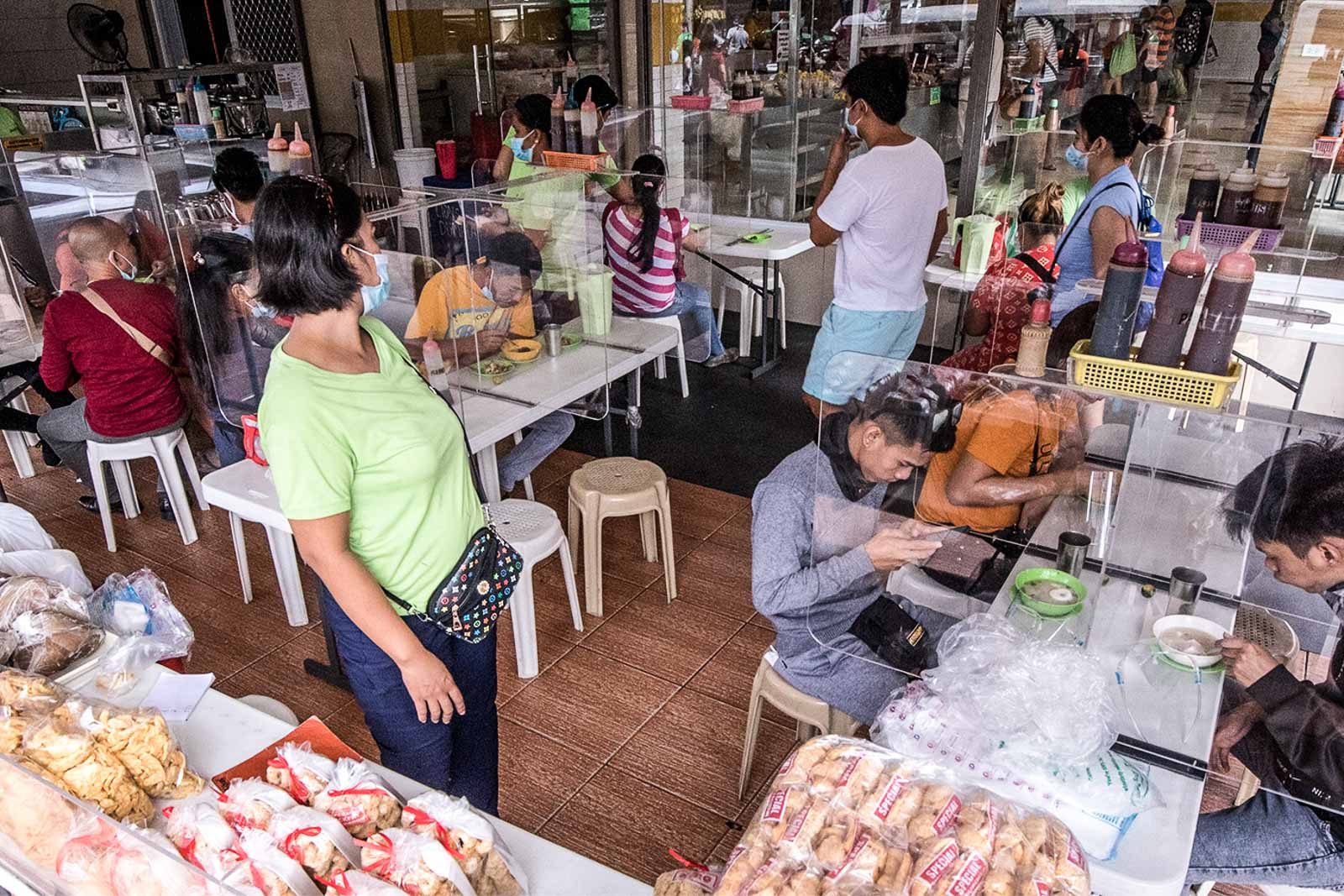SUMMARY
This is AI generated summarization, which may have errors. For context, always refer to the full article.

To curb the transmission of COVID-19 in virus epicenter Metro Manila, the Octa Research group has proposed that the capital region be placed under a “circuit breaker” lockdown.
In a virtual press briefing on Friday, March 19, Octa Research fellow Professor Ranjit Rye said that the surge of COVID-19 cases is “record breaking in terms of its infectiousness and the speed of its increase.”
“If we don’t deal with the surge now effectively and quickly, it will complicate our vaccination program. Many of our hospitals are at full capacity…. We need to deal with it, and we need to deal with it collectively,” Rye said.
“We need a circuit breaker lockdown. I know a lot of people are allergic to this…. We are supposed to be in GCQ, but in reality we have a very, very lax GCQ,” he added.
Rye said that the Octa team presented this proposal to Metro Manila mayors on March 11.
Metro Manila, the Cordillera Administrative Region, Batangas, Tacloban City, Davao City, Davao del Norte, Lanao del Sur, and Iligan City are still under general community quarantine (GCQ), while the rest of the country is under the less restrictive modified GCQ.
A circuit breaker lockdown was implemented in Singapore in April 2020 to contain the spread of COVID-19. It was a tight set of restrictions meant to “reverse the tide of the epidemic” and curb the infections.
A BBC report said that “rules could feel a lot like the original national lockdown – but crucially a circuit-breaker is for a fixed period of time.”
What does this mean for the Philippines?
Rye explained that under such a lockdown, people would observe “voluntary ECQ” and for workplaces to implement a “significant work from home strategy.”
ECQ or enhanced community quarantine is the strictest form of lockdown where a fixed number of people per household are allowed to leave the home for essential tasks or for work in essential services.
“We cannot move forward unless we realized that there should be some significant changes in mobility,” he said.
In imposing a circuit breaker lockdown, Rye said it could be like “hard GCQ” or “soft MECQ (modified ECQ).”
“When we say hard GCQ, it’s returning the GCQ we had last September (2020),” he said.
In areas under GCQ and modified GCQ, regular citizens are freer to move around. However, they are still urged to travel only when necessary – to buy food and essential items, or for work. Travel for leisure is still prohibited. (READ: ECQ, MECQ, GCQ, MGCQ: Who can go where?)
Rye said Metro Manila should be placed under hard GCQ for at least two weeks to slow down the spread of the virus. The hard GCQ rules include the following:
- Operation of government offices and industries will continue but with a significant percentage of the workforce allowed to work in various arrangements such as work-from-home and/or staggered work hours during the quarantine period.
- Social gatherings will be discouraged during the duration of the quarantine.
- Certain activities in enclosed areas shall be discouraged such as indoor dining.
- Quarantine passes for the work force only.
- Mass transportation should be available for all workers during the quarantine.
“If R continues to rise after two weeks, then we move to soft MECQ. If the R is less than 1 or close to 1 then we go back to hard GCQ,” Rye said.
The Octa team said that reproduction number (R) – the number of people that one COVID-19 positive case can infect – in Metro Manila is now at 1.9. Experts have said that the goal is to keep R below 1 to contain virus transmission until a COVID-19 vaccine.
The Octa team is also proposing the following rules for “soft MECQ (modified enhanced community quarantine)”:
- Operation of government offices and industries, including MSMEs will continue.
- For the government and industries, a significant percentage of the workforce will be allowed to work in various arrangements such as work-from-home and/or staggered work hours during the quarantine period.
- Malls and groceries and other essential businesses will continue to operate but at limited capacity.
- All social gatherings are prohibited during the quarantine period.
- Mass transportation will continue for workers.
Despite having one of the longest and strictest lockdowns in the world, the Philippines’ COVID-19 cases continue to rise, with 7,103 new infections and pushed country’s total caseload to 648,066.
The pandemic has claimed over 12,000 lives in the Philippines and ushered in the country’s worst recession since World War II. The Philippines is projected to suffer the worst economic downturn in Southeast Asia.
On Friday morning, the government said it was reimposing stricter limitations on certain economic activities and establishments in Metro Manila and other GCQ areas for over two weeks, or until April 4. – Rappler.com
Add a comment
How does this make you feel?

There are no comments yet. Add your comment to start the conversation.